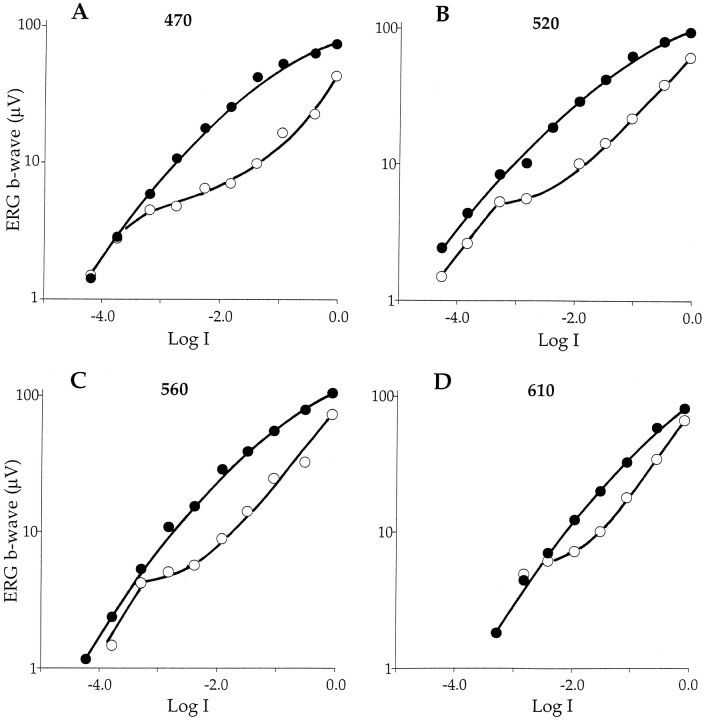Fig. 6.
Intensity–response functions of the ERG b-wave measured day and night in constant darkness. A–D, The amplitude of the ERG response is plotted as a function of Log I for four wavelengths. The stimulus intensity at Log I equals 0.0 is 1014 photons sec−1cm−2 that for a 50 msec flash is 5 × 1012 photons cm−2flash−1. The intensity–response functions change with time of day for all wavelengths tested. They grow monotonically with increasing stimulus intensity at night (filled circles) but exhibit plateau regions at lower light stimuli during the day (open circles). The plateaus become less prominent at longer wavelengths.

